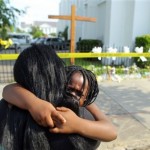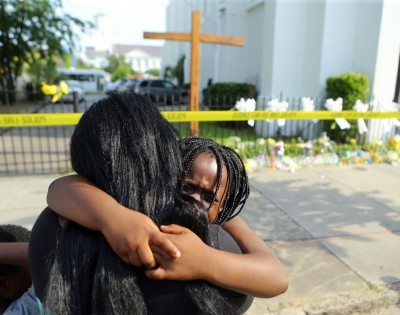
Over the last year, we’ve lost a countless number of black lives to police brutality and senseless murder. After losing nine lives at Charleston AME Church in South Carolina, discussions surrounding the Confederate flag surfaced, and several southern Black churches burned to the ground. Though all of these events were racially motivated, none of them were accurately reported as such. Instead, networks like Fox News attempted to cover black pain through a colorblind prism that merely deflected from the real issues at play. In true fashion, the media placed a colorblind lens on an explicitly color-based issue. Due to the media’s refusal to see this crime as a race issue, we witnessed the siphoning of Black …
Over the last year, we’ve lost a countless number of black lives to police brutality and senseless murder. After losing nine lives at Charleston AME Church in South Carolina, discussions surrounding the Confederate flag surfaced, and several southern Black churches burned to the ground. Though all of these events were racially motivated, none of them were accurately reported as such. Instead, networks like Fox News attempted to cover black pain through a colorblind prism that merely deflected from the real issues at play.
In true fashion, the media placed a colorblind lens on an explicitly color-based issue. Due to the media’s refusal to see this crime as a race issue, we witnessed the siphoning of Black pain, the normalization of white terrorism and the imperviousness of social accountability in America. Each of these contributed to the myth of post-racialism and emptied hatred of its color. This projected absence of color was most evident after Dylann Roof ruthlessly murdered the Charleston 9.
After Dylann Roof was taken into custody, mainstream media immediately devised a campaign to humanize him at the expense of his black victims. They projected his baby pictures and shared stories of his troubled past, while not delving nearly as deep into the lives of the actual victims, including State Senator Clementa Pinckney.
As I perused my timeline, I noticed a deep hesitation to call Mr. Roof what he was: a racist and a terrorist. Instead, the media invited pundits to temper the discussion by providing diagnoses of his sanity. They muddied the conversation with discussion of gun reform, mental illness and religious freedom, all to avoid categorizing the massacre as a racist attack on black people. And by omitting the racial component of the massacre, they furthered the normalization of white terrorism, which only gave way to the next phase in draining hatred of its hue — the expectation of black forgiveness. This expectation routinely minimizes racism and excuses the perpetrators of it, completely dismissing the need for sincere apology and repentance.
America has always relied on black forgiveness to absolve itself of white guilt. The Charleston massacre was no different. By choosing to highlight the forgiveness of the black faith community, they shifted the burden of responsibility onto the oppressed in a classic display of deflection.
In the name of being a model Christian, these black families waived their right to exercise their justified anger. As the headlines touted Black America’s ability to take higher ground in racially oppressive moments, the Charleston narrative morphed into an endorsement of the gospel of colorblindness. This doctrine calls for reconciliation in the midst of black suffering, and bypasses the healing necessary to sustain it.

By rushing the healing of the black community in Charleston, society assumes that the black community is immune to issues that threaten its very existence, such as racism and systemic oppression. This assumption asserts that terrorism and trauma are not worthy of diagnosis or treatment. Due to our resilient history, society assumes that black people are able to withstand consistent onslaughts of racism to no avail.
When delivering the eulogy at Clementa Pinckney’s funeral, President Obama emphasized the significance of God’s grace, even going so far to sing his own rendition of Amazing Grace. While the moment was refreshing, President Obama’s solicitation for reconciliation is nothing new for black people. From chattel slavery to Jim Crow, black folks have had to summon this resolve in order to survive.
But now, black people have another adversary. This enemy remains wading in the shadows, hiding his candor. This enemy is named post-racialism, and almost managed to rid Charleston of its black hue, but didn’t. And though the myth of colorblindness was debunked this time, the same threat is still exists, whether we’re aware of it or not.
Colorblindness is the social cataract that makes America visionless to the reality of race, and thus, the possibility of pain — a pain that unleashes itself in the pews of black churches and in the embers of sacred crosses burned to the ground by white supremacists.
Dylann Roof’s manifesto ferociously outlines his hatred for black people. And yet, the media still gave him the benefit of the doubt. Even as he is charged with multiple hate crimes, the FBI has failed to label him a terrorist. He single-handedly, on the canvas of nine innocent lives, painted with the hue that has historically haunted black Americans. This shade of hate poignantly eliminates the trace of color — whitewashing any vestiges of pigment in order to cover its tracks.What is the color of hate? It is not a color at all, but rather, the intentional and utter erasure of it.
— This feed and its contents are the property of The Huffington Post, and use is subject to our terms. It may be used for personal consumption, but may not be distributed on a website.
See more here:


























